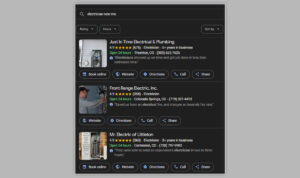Securing improved rankings for their most valuable keywords in the search engine results pages (SERPs) remains a key challenge for many businesses that invest in SEO. While content and on page elements are invaluable to driving results, backlinks remain one of the most influential ranking factors. However, not all backlinks are created equal. While quantity of links is still important, the ‘topical relevance’ and quality of your backlinks play a larger role than ever before in building domain authority, and ultimately, performance. In this article we explore more about link quality and how to better understand its impact on your website’s SEO performance.
Why are backlinks important for SEO?
In laymen’s terms – search engines, like Google, consider high quality and topically relevant links (from third party websites) as endorsements of a site’s credibility and expertise. When reputable websites link back to yours, it signals to search engines that your content is valuable and trustworthy. Consequently, this contributes positively to your site’s rankings. However, not every link from every website has equal ‘SEO value’ – in fact some links from low quality websites (known herein as ‘spammy links’) could even be damaging for your website’s SEO performance.
Why is backlink quality important for SEO?
Link quality is often more important than sheer quantity. In a nutshell, ‘quality links’ are links from websites that Google and other search engines already perceive as being high quality. Quality links originate from reputable and contextually relevant sources. For instance, a backlink from a website like the BBC or a renowned industry website carries more weight for your SEO than several links from obscure directories.
What is ‘link relevancy’ and why is it important for SEO?
When we spoke to other experts to create our link building trends infographic, we saw relevancy and quality were very important. The ‘relevancy’ of the third party websites that link to your website is crucial for your SEO. Link relevance refers to whether a backlink to your website originates from another high quality website that is in a relevant industry to yours. For example, if you’re a tour operator, Google is more likely to favour a link from a high profile travel magazine to your site than it is from a beauty website. This means that your link building strategy should be focused on gaining quality links from industry-relevant websites. In the past, numerous ‘black hat’ SEO practitioners sought links from any available site, regardless of relevance. Google disapproved of this approach, gradually shifting its focus to rewarding links that are topically relevant to the associated company.
In short, the relevance of the linking website’s content to yours plays a key role. A link from a relevant source holds more significance in the eyes of search engines. But not just that, as a reader, you too want to be directed to sites that continue to provide useful and relevant information.
What impact does link placement and anchor text have?
Where the link is placed within the content and the anchor text you use can also have an impact on its value from an SEO perspective. Natural, contextually relevant anchor texts tend to have a more positive effect on SEO.
Links embedded within the main body of well-written content are generally more valuable. Search engines often attribute greater significance to links that are contextually placed within relevant paragraphs. As opposed, for example, to links within headers or footers which may be perceived as less central to the main content.
The anchor text, which is the clickable text in a hyperlink, should seamlessly integrate with the surrounding content. Natural, contextually relevant anchor text provides a clear indication of what the linked page is about. While including target keywords in the anchor text is important for SEO, it’s crucial to avoid over-optimisation or keyword stuffing. Google values diversity, so use variations and synonyms to maintain a natural appearance. You should also aim for anchor text that accurately describes the linked content. This not only aids search engines in understanding the content but also enhances the user experience.
Natural link placement and relevant anchor text send strong signals to search engines about the connection between the linking and linked pages. This contributes to the overall relevance of the content. As well as this, properly placed and well labelled links enhance the user experience by providing additional resources or related information. And as search engine algorithms continually develop to understand user intent and content relevance. Well placed links with appropriate anchor text align with these algorithms and can positively influence rankings.
How do you evaluate link quality metrics?
Third party SEO tools can provide valuable metrics such as ‘Domain Authority’, ‘Page Authority’, and ‘Trust Flow’ to help SEOs quantify the quality of their website’s backlinks. However, these metrics are not always an exact science and can differ (sometimes wildly) from each other. It’s important to remember that these metrics are essentially ‘best guesses’ from the algorithms of third party tools and are therefore not Google or gospel. Avoid reading too much into micro movements in the score of one metric as this can often be misleading and lead to an incorrect analysis of what’s actually happening. Instead, we advise looking at as many quality link metrics as possible to unearth the overall trends in your backlink profile that are repeated across several of them.
With this approach, you can evaluate the quality and relevance of your backlinks, monitor metric changes over time, and pinpoint areas for improvement. For instance, identifying links with low authority allows you to strategically focus on building high-authority backlinks to enhance your website’s overall link profile. Regularly monitoring link metrics using SEO tools helps you to make data-driven decisions for optimising your link-building strategies.
Examples of SEO Tools:
Ahrefs:
Ahrefs is a comprehensive tool that provides insights into backlink profiles, referring domains, and anchor text distribution. It also offers features for competitor backlink analysis and quantifies link quality using it’s ‘Domain Rating’ metric (which runs on a score of 1-100).
Semrush:
Offers backlink analytics, including its own authority score metric, and allows you to track your competitors’ link-building strategies. Semrush covers a broad spectrum of SEO-related functions.
Majestic SEO:
Focuses on link intelligence, providing metrics like Trust Flow and Citation Flow to assess the quality of backlinks.
Moz:
Moz’s link analysis tool and ‘Domain Authority’ is perhaps one of the most historically respected in the SEO world. Similar to other tools, Moz provides insights into backlink profiles, anchor text, and domain authority.
By leveraging these tools, you can gain a comprehensive understanding of your link profile, identify opportunities for improvement, identify how your backlink profile is performing compared to your competitors, and refine your link-building strategies for better SEO outcomes.
Some tips for improving link placement / quality:
It’s not always possible to determine how and where third parties link to your website. For example, there’s nothing to stop a low quality website linking to yours and ultimately you don’t have control over things like the anchor text that other websites use when they link to your website. However, there are many things that you can include in your link building strategy to try and influence these elements. We’ve included just a few of these below.
- When sending out digital PR or written material for link building purposes, consider the placement of links strategically within the content where they add value and context. If website editors or journalists copy and paste your content as a starting place, you have a higher likelihood of being linked to in a favourable way. For example, a hyperlink with on your brand name or a relevant phrase to your website is likely going to have more than a hyperlink on the phrase ‘click here’.
- Use a variety of anchor texts, including branded terms, generic phrases, and relevant keywords to create a diverse and natural link profile (see caveats in the point above)
- Monitor the performance of links over time and adjust strategies based on analytics data and changes in SEO best practices.
In summary, effective link placement within content and the use of natural, contextually relevant anchor text are important for your SEO strategy. They contribute not only to domain authority, and potentially search engine rankings – they can also to a positive user experience and the overall credibility of your website.
The post What’s The Impact of Link Quality on SEO Rankings? appeared first on Koozai.com
Source: koozai.com


